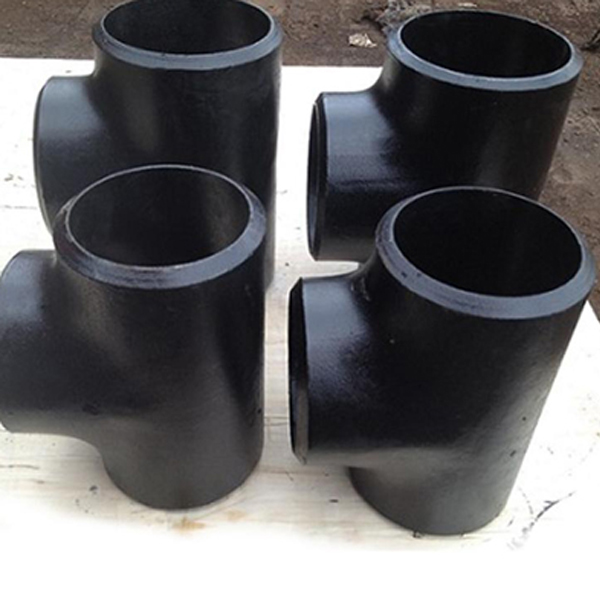
Pipe Fitting Tee: Types, Sizes, and Materials
Pipe fitting tees are essential components used in piping systems to create a branch connection. They come in various types, sizes, and materials to suit different applications and requirements. In this article, we will explore the different types of pipe fitting tees, their sizes, and the materials commonly used for their construction.


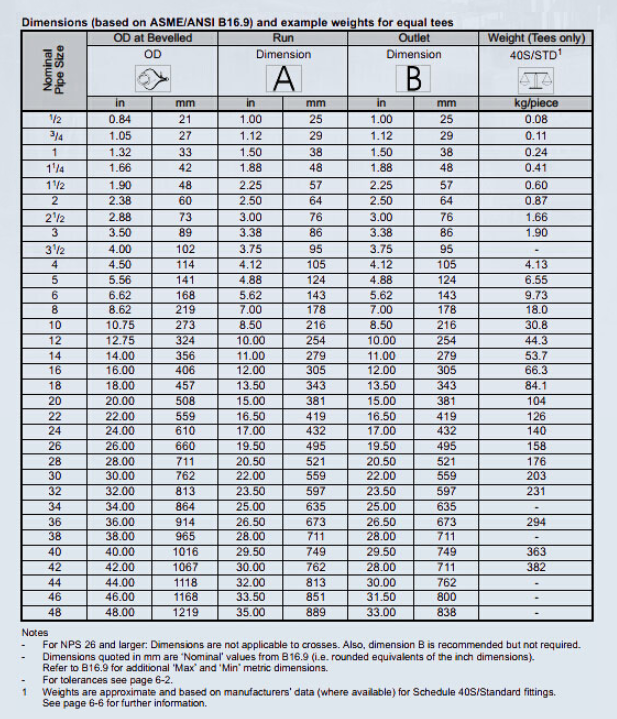
Types of Pipe Fitting Tees
-
Equal Tee (EQ Tee): An equal tee has three outlets of the same size, forming a 90-degree branch connection.
-
Straight Tee: A straight tee, also known as a straight-through tee, has a single inlet and two outlets, forming a 90-degree branch connection.
-
Reducing Tee: A reducing tee has one inlet and two outlets of different sizes, allowing for a branch connection with different pipe diameters.
-
Carbon Steel Tee (CS Tee): A carbon steel tee is made from carbon steel materials, such as ASTM A234WPB, A234WPC, A420WPL6, Q235, 10#, A3, Q235A, 20G, 16Mn, DIN St37, St45.8, St52.4, St.35.8.
-
Alloy Steel Tee (AS Tee): An alloy steel tee is constructed from alloy steel materials, including 16Mn, Cr5Mo, 12Cr1MoV, 10CrMo910, 15CrMo, 12Cr2Mo1, A335P22, St45.8, ASTM A860 WPHY X42, X52, X60, X70.
-
Stainless Steel Tee (SS Tee): A stainless steel tee is made from stainless steel materials, such as 1Cr18Ni9Ti, 0Cr18Ni9, 00Cr19Ni10, 0Cr17Ni12Mo2Ti, 00Cr17Ni14Mo2, 304, 304L, 316, 316L.
-
Lateral Tee: A lateral tee, also known as a side outlet tee, has one inlet and two outlets at a 45-degree angle, allowing for a branch connection in a different direction.
-
Barred Tee: A barred tee has a bar or a restriction in the branch outlet, which helps to control the flow or prevent pigging.
-
Steel Saddle Tee: A steel saddle tee is a type of tee that is used to create a branch connection on an existing pipeline without the need for cutting or welding.
Sizes and Wall Thickness
Pipe fitting tees are available in a range of sizes and wall thicknesses to accommodate different piping systems. The standard sizes for pipe fitting tees are typically measured in inches and range from 1/2″ to 48″ (DN15 to DN1200). The wall thicknesses can vary and are specified using various schedules, including SCH5S, SCH10S, SCH10, SCH20, SCH30, SCH40, STD, XS, SCH60, SCH80, SCH100, SCH120, SCH140, SCH160, XXS, and 2MM.
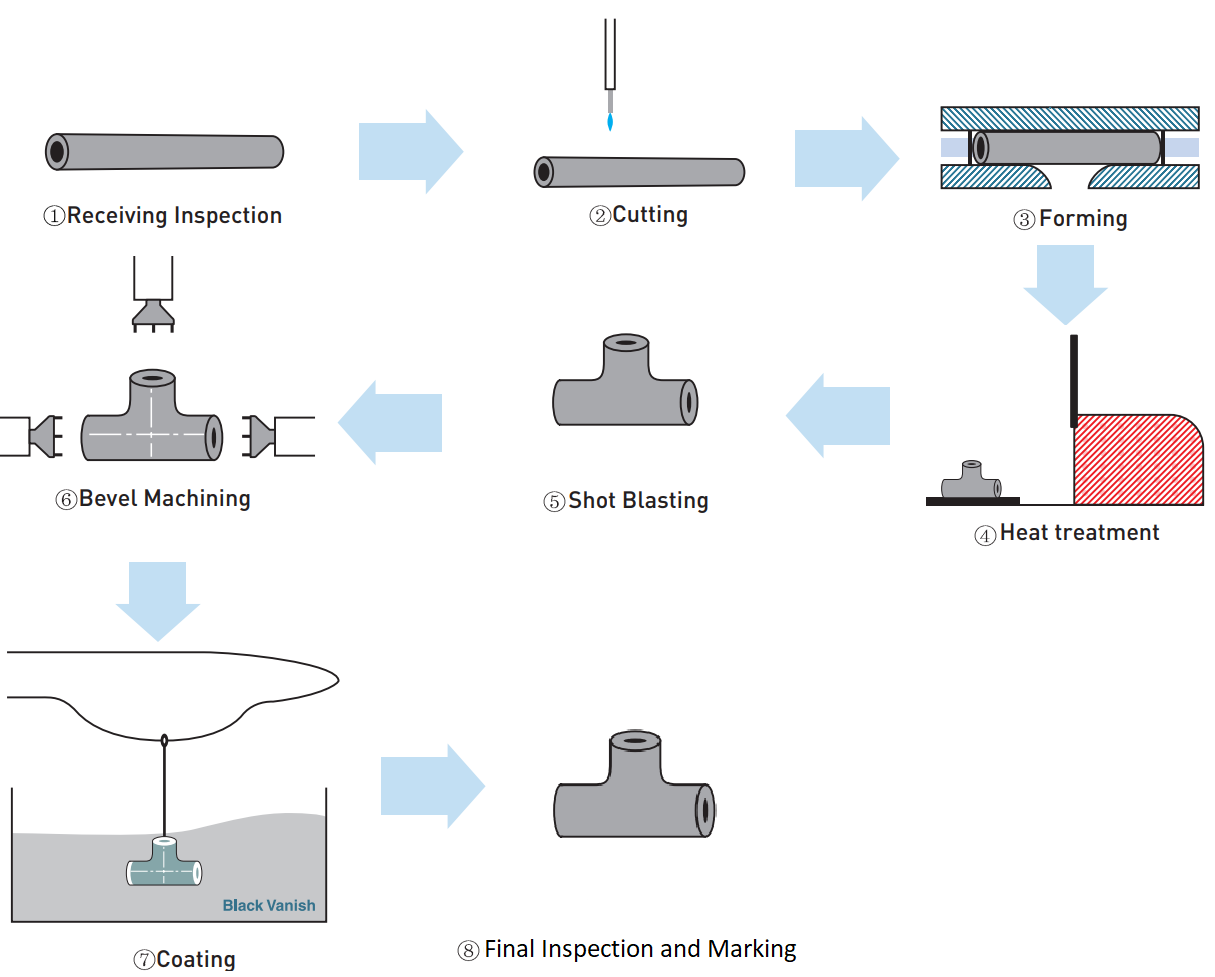
Material Selection
The choice of material for pipe fitting tees depends on the specific application, operating conditions, and compatibility with the fluid being transported. Here are some commonly used materials for pipe fitting tees:
-
Carbon Steel: ASTM A234WPB, A234WPC, A420WPL6, Q235, 10#, A3, Q235A, 20G, 16Mn, DIN St37, St45.8, St52.4, St.35.8.
-
Stainless Steel: 1Cr18Ni9Ti, 0Cr18Ni9, 00Cr19Ni10, 0Cr17Ni12Mo2Ti, 00Cr17Ni14Mo2, 304, 304L, 316, 316L.
-
Alloy Steel: 16Mn, Cr5Mo, 12Cr1MoV, 10CrMo910, 15CrMo, 12Cr2Mo1, A335P22, St45.8, ASTM A860 WPHY X42, X52, X60, X70.
The material selection should consider factors such as corrosion resistance, temperature resistance, pressure requirements, and compatibility with the fluid being transported.
Standards
Pipe fitting tees are manufactured according to various standards to ensure their quality, dimensional accuracy, and compatibility with other components. Some commonly referenced standards for pipe fitting tees include ANSI B 16.9, ANSI B16.28, MSS SP43, MSS P75, JIS2311, JIS 2312, JIS2313, DIN2615, GB-12459, and GB-T13401.
These standards provide guidelines for the design, manufacturing, and testing of pipe fitting tees, ensuring their reliability and performance in different piping systems.

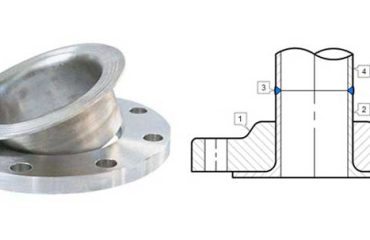
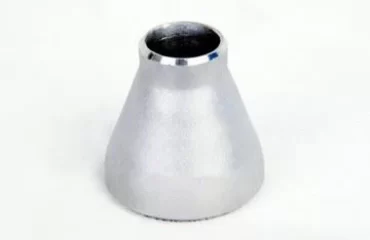
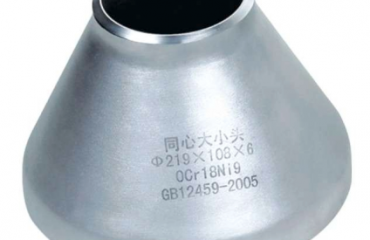
You must be logged in to post a comment.